Spying the right spots for right whale protection
Scientists listen for whales underwater and spy their food from space to help avoid ship strikes. Plus, Israel's vultures, Vienna's geothermal, China's declining emissions, and skates up in Scotland.
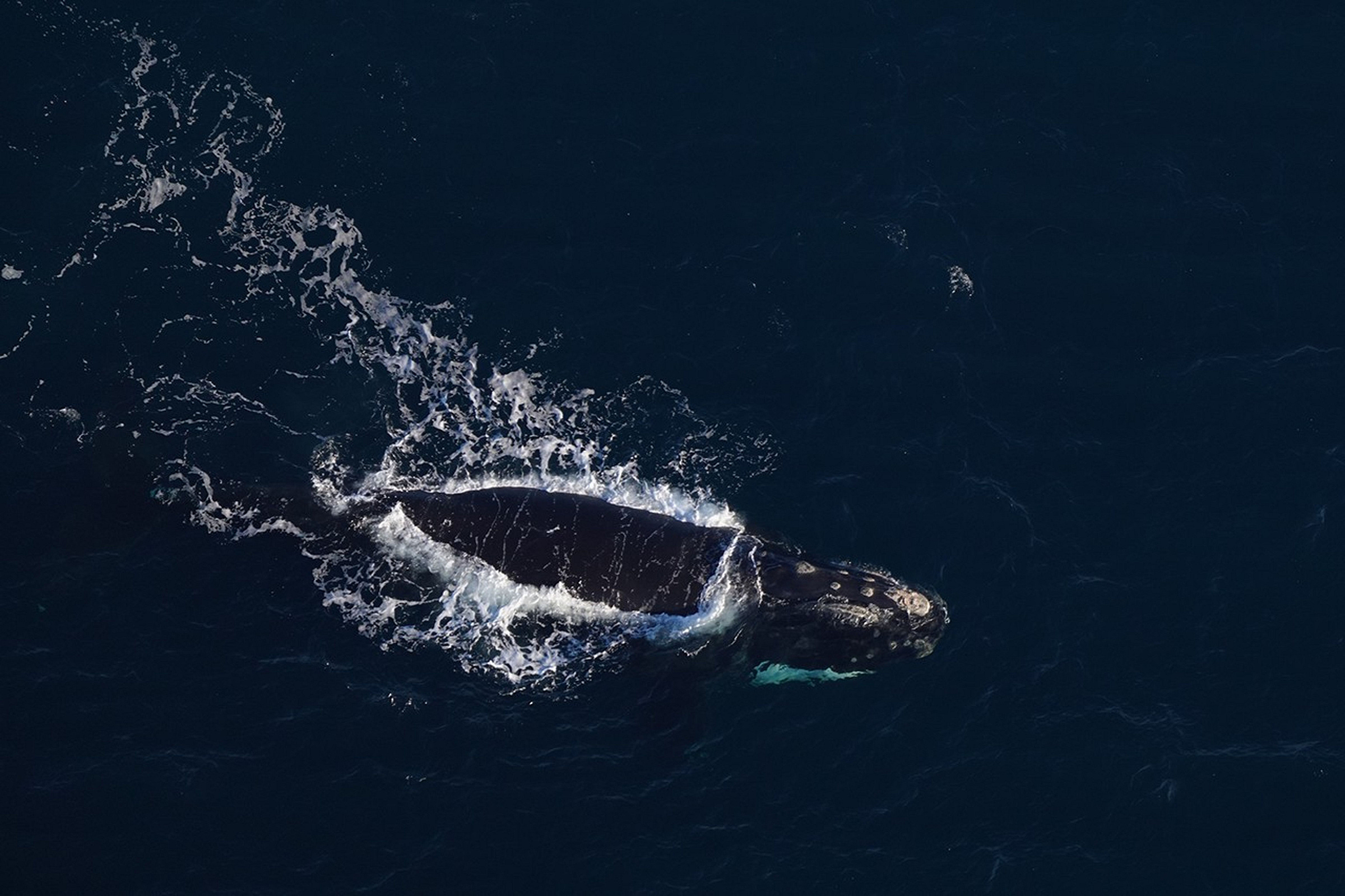
There are still some stellar scientists employed by the U.S. of A., and they are coming up with innovative solutions to protect critically endangered North Atlantic right whales.
Scientists are deploying satellites and acoustic buoys to track in real time where whales are likely to congregate so ships can avoid hitting them.
NASA said this week it is monitoring swarms of zooplankton from space to help right whales. See more below. In addition, scientists are deploying buoys off the coast of Massachusetts to “listen” for right whale activity, the Cape Cod Times reports:
As part of the effort, two buoys were placed this spring — one in the heart of Cape Cod Bay, a seasonal hotspot for right whales, and one off Cape Ann, which the whales swim by on their way to their summer habitat in Canada's Gulf of St. Lawrence.
It’s a game-changer for conservation efforts and a new chapter in watching out for and protecting the roughly 370 right whales left on the planet.
As we reported last week, a female right whale mother that hadn’t been seen in three years reappeared in April, likely inching that total up to 371.
North Atlantic right whales were hunted for hundreds of years because they were the easiest whales to spot and kill, hence their whaling moniker “right whales.” They spend much of their time skimming the ocean surface for food. Since the end of whaling, their numbers have not recovered like other whale species worldwide. They continue to die from ship strikes in the busy shipping corridor of the Northeast and Maine lobster fishing gear entanglements.
NASA tracks plankton from space to help ships avoid right whales
From NASA:
In the waters off New England, one of Earth’s rarest mammals swims slowly, mouth agape. The North Atlantic right whale filters clouds of tiny reddish zooplankton—called Calanus finmarchicus—from the sea. These zooplankton, no bigger than grains of rice, are the whale’s lifeline. Only about 370 of these massive creatures remain.
For decades, tracking the tiny plankton meant sending research vessels out in the ocean, towing nets and counting samples by hand. Now, scientists are looking from above instead.
Using NASA satellite data, researchers found a way to detect Calanus swarms at the ocean surface in the Gulf of Maine, picking up on the animals’ natural red pigment. This early-stage approach, described in a new study, may help researchers better estimate where the copepods gather and where whales might follow.
Tracking the zooplankton from space could aid both the whales and maritime industries. By predicting where these mammals are likely to feed, researchers and marine resource managers hope to reduce deadly vessel strikes and fishing gear entanglements—two major threats to the species. Knowing the feeding patterns could also help shipping and fishing industries operate more efficiently.
“NASA invests in this kind of research because it connects space-based observation with real-world challenges,” said Cynthia Hall, a support scientist at NASA headquarters in Washington. She works with the Early Career Research Program, which partly funded the work. “It’s yet another way to put NASA satellite data to work for science, communities, and ecosystems.”
These are just a couple of examples of humanity’s continuing innovation to solve critical environmental problems.
I, for one, would like to keep sharing this planet with North Atlantic right whales.
Read more on whale recovery here:
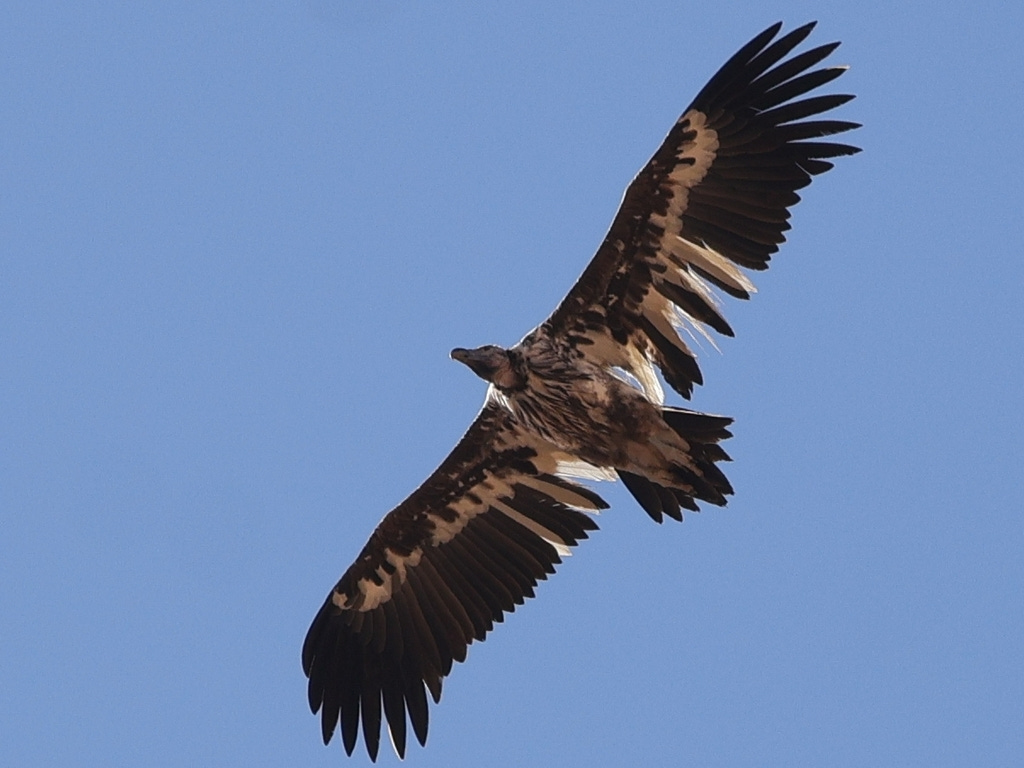
Nubian vulture spotted in Israel, first time in 25 years
The Nubian vulture, otherwise known as the Arabian lappet-faced vulture, has seen steep declines across the Middle East due to lead poisoning as a result of eating hunted and dispatched animals shot with lead bullets. Now, they’ve returned to nest in Israel after a 25-year absence.
(Please see my story on California condors for a reminder of why no one should be eating meat hunted with lead bullets.)
YNet News reports:
The last recorded nesting in Israel occurred in 1989 near Yotvata. In the 1970s, conservationists launched efforts to save the species, including the establishment of feeding stations in the Arava and Eilat mountains and a captive breeding program at Tel Aviv University’s zoological gardens. The effort, which involved collecting chicks from wild nests, ultimately failed and faded over time.
Dr. Yoav Perlman, director of the Birding Center at the Society for the Protection of Nature, added, “Despite decades of effort, the Nubian vulture’s return remains uncertain — but this sighting gives us a reason to hope.”
Vienna leads way on climate with geothermal and solar
From NPR:
Vienna takes its job as a climate role model seriously. In addition to mandating solar panels and energy-efficient buildings, Vienna is now heating thousands of homes with geothermal energy instead of planet-heating natural gas. It's building massive heat pumps. It's investing in new infrastructure to help adapt to heat waves and floods. And this spring Vienna passed a historic climate law, outlining a plan to get its climate pollution down to zero by 2040.
China drops CO₂ emissions even as electricity demand pushes higher
Thanks
for bringing this story to my attention.From Carbon Brief:
For the first time, the growth in China’s clean power generation has caused the nation’s carbon dioxide (CO₂) emissions to fall despite rapid power demand growth.
The new analysis for Carbon Brief shows that China’s emissions were down 1.6% year-on-year in the first quarter of 2025 and by 1% in the latest 12 months.
Electricity supply from new wind, solar and nuclear capacity was enough to cut coal-power output even as demand surged, whereas previous falls were due to weak growth.
Scottish marine protected areas turn tide for flapper skate
Two marine protection areas off the coast of Scotland have helped an endangered fish rebound. Fishermen who catch and release flapper skates, a relative of sharks, can film and log their release of the live fish back into the ocean using an AI-powered database.
From The Guardian:
“They’re showing up all over, mostly in Scotland, but I think they’re also starting to move down south,” he said. “You can’t be wrong returning fish alive; that can never be wrong.”
Up to 300 anglers are submitting data, converting their trophy photographs into scientific evidence; some have been trained to scan the identification tags implanted on many skate.
Indonesia: Indigenous conservationists lead the fight to save endangered primates
Deforestation and erosion of traditional hunting taboos are driving down numbers of langurs, macaques and gibbons on Siberut Island in Indonesia. A team in one village launched patrols and a census to save their primates, some of which are considered sacred.
From Mongabay:
The Malinggai team has long-term goals. Dami [Tateburuk] says he hopes to designate a protected area on Tateburuk clan land and build a rehabilitation center for rescued local primates. With enough funding, he wants to hire hunters as rangers and educators.
“Hunters know the most about primates,” he says. “And once they have an incentive, we can start to change their mindset.”
Connecting the dots: Whenever we hear of deforestation in Indonesia or Malaysia, it’s due to the demand for palm oil, that same palm oil featured as a “good oil” in Nutella. Palm oil is also used in biodiesel in the U.S. The Renewable Fuel Standard enacted in 2005 required all diesel to include a minimum percentage of biodiesel. While touted as a way to reduce greenhouse gas emissions, it has been criticized by policy analysts for doing the opposite. This standard slightly improves air quality in U.S. cities while incentivizing deforestation and the expansion of palm oil plantations in Southeast Asia, to the detriment of primates like orangutans and resulting in the release of methane, a greenhouse gas more powerful than carbon dioxide, from ancient peatlands.
Stay tuned for next week’s post, when I’ll write about wildfire prevention and how proven techniques like cutting trees and lighting fires saved some of the oldest trees on the planet.
The cleverest chefs soak their bones and bread in a birdbath first.
: Raven or crow? 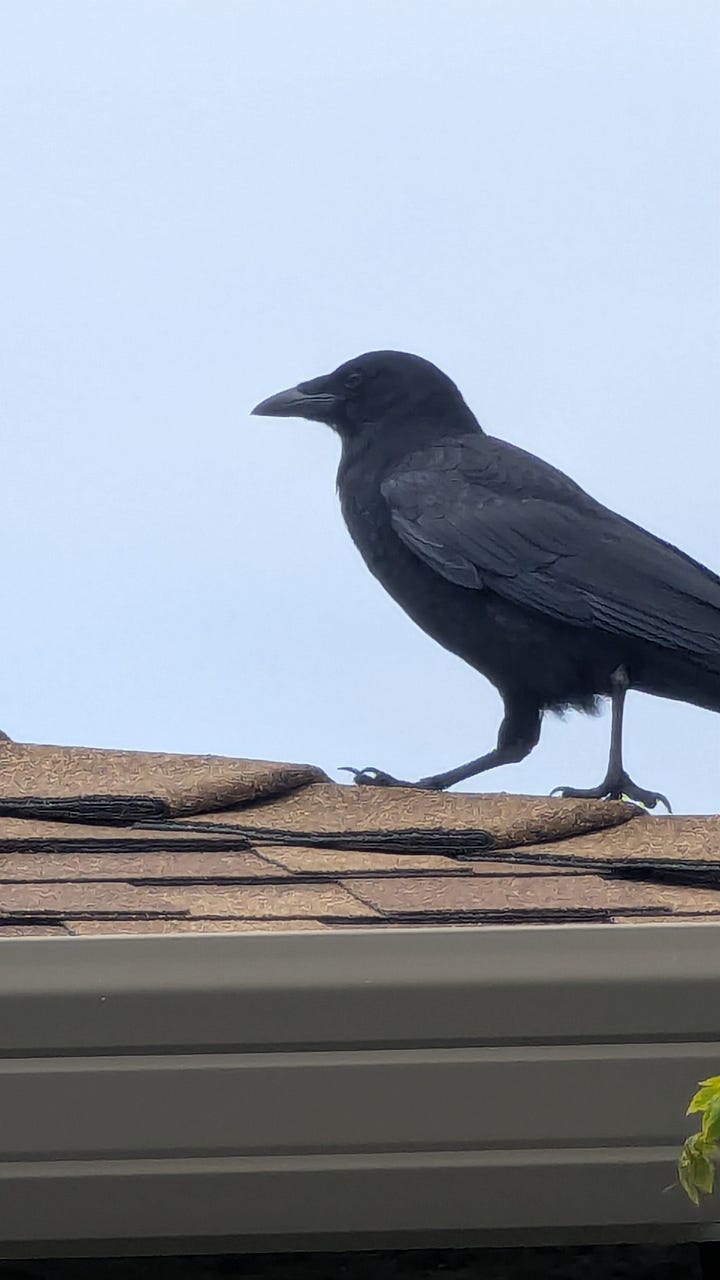
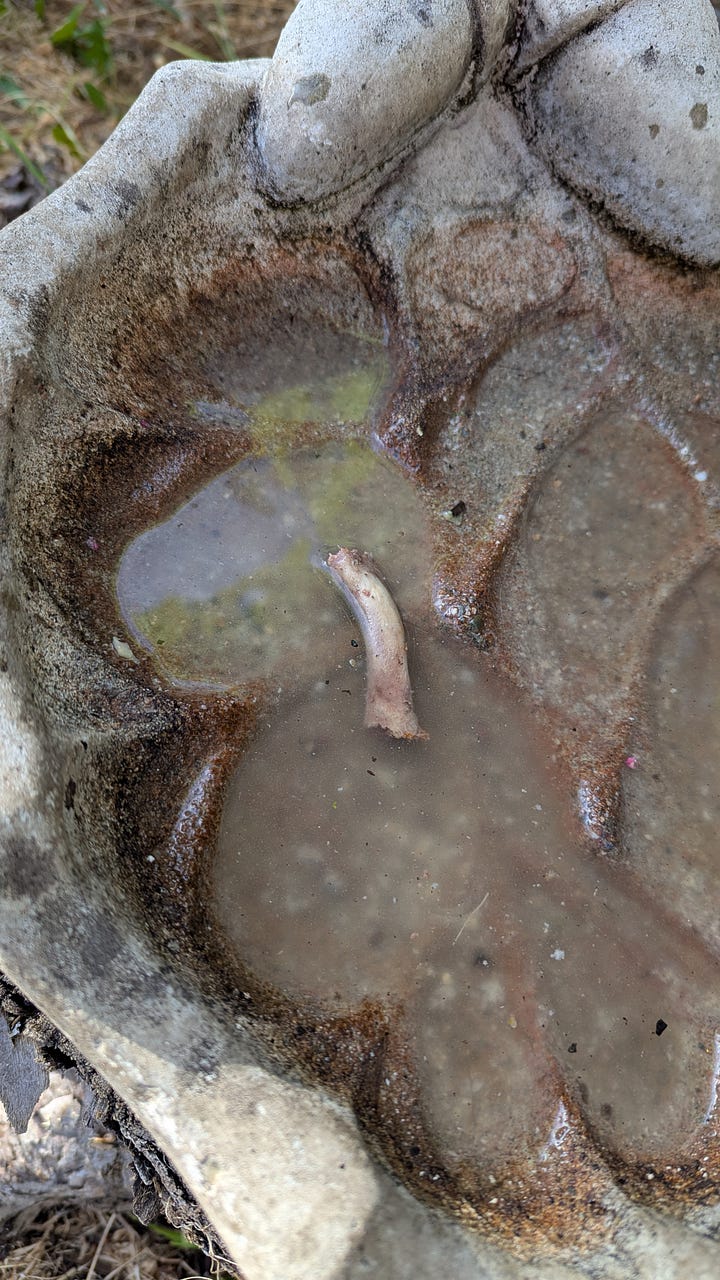
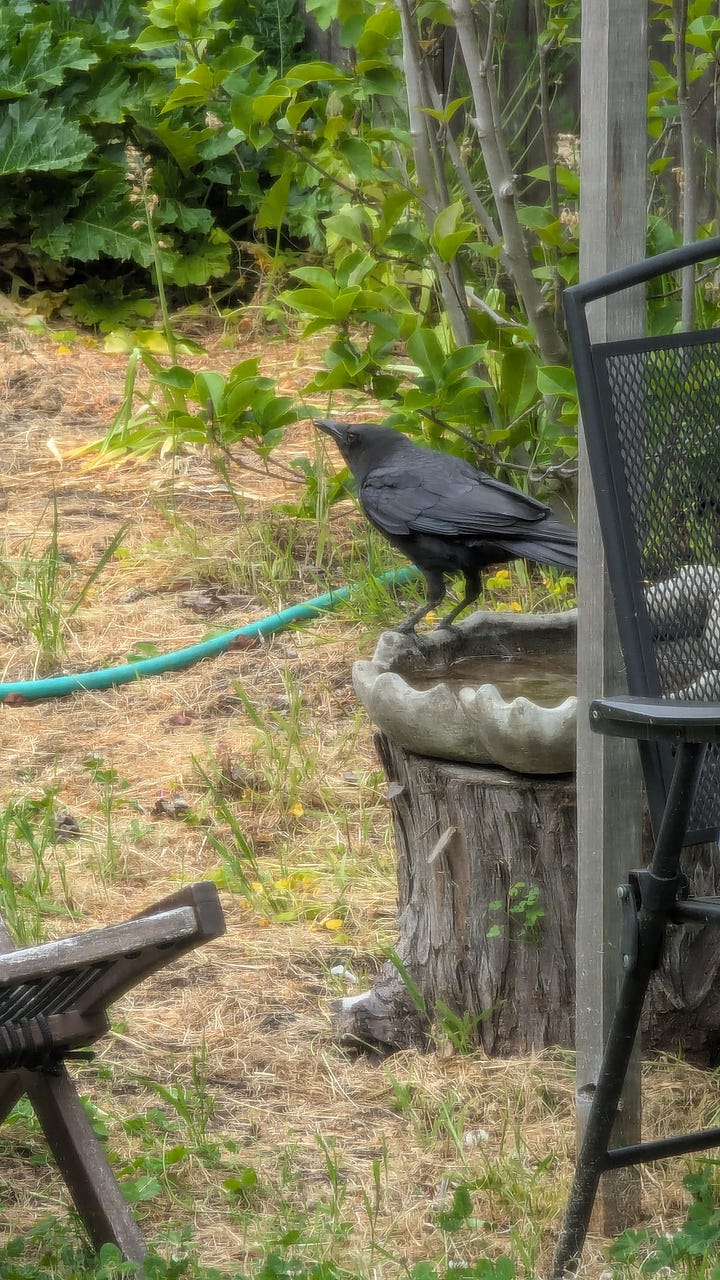
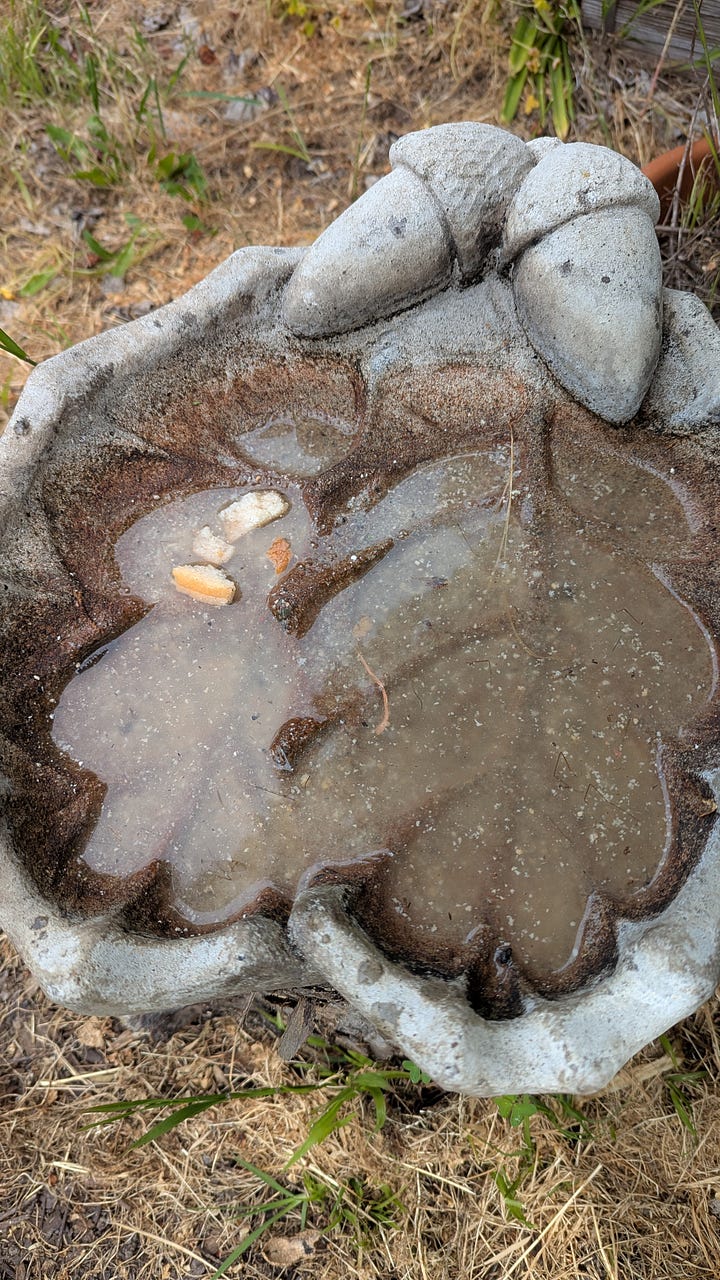
About Earth Hope:
Earth Hope is a solutions-based journalism project that highlights environmental success stories to inspire action. I’m Amanda Royal, a former newspaper reporter and current eco-news junkie. Read more about this project and what inspired it.
Visit earthhope.substack.com for more stories. Visit my Services page if you’re a writer who’d like some help figuring out Substack.





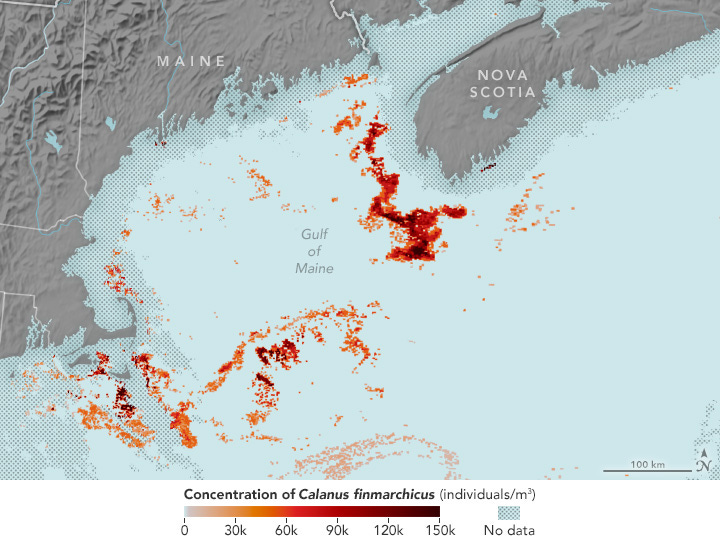
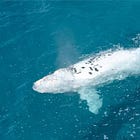
Fascinating stuff. Great news about the Nubian vulture. I had an unexpected encounter with what might be the last wild Arabian leopard in Israel about 15 years ago.
I’m so curious about that sub species
Excellent article! As for the bird ID, I believe it's a crow.